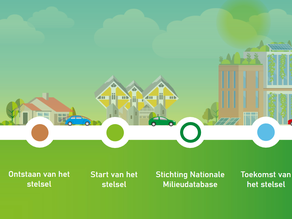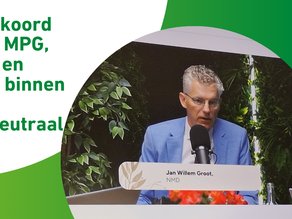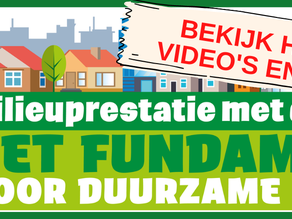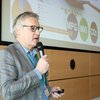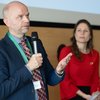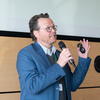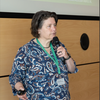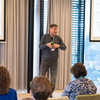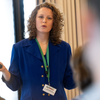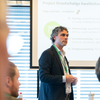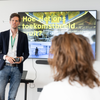Conference: how can we work together to ensure more environmental data on installations in the NMD?
Report on the conference Environmental data on installations in the NMD - March 6, 2025
Installations account for 25% to 40%, and in some cases as much as 50%, of a building's environmental impact, but much environmental data on installations is still missing from the NMD. On Thursday, March 6, manufacturers, installers, architects, designers, consultants, contractors, policymakers and LCA experts came together to discuss this issue. What is the point and necessity of recording environmental data from installations in the NMD? Which environmental data do we already have, which do we not yet have? How do you go about collecting data and how do you deal with obstacles you encounter in the process? The conclusion: it is complex, but whatever you do, get started collecting environmental data. Cooperation between all parties involved is key.
The National Environmental Database Foundation organized this conference together with Techniek Nederland, FME, Dutch Green Building Council, Greenworks and RVO.
Full house, entire chain present
There is no doubt that the theme of environmental data is a live issue in the installation industry. In the main hall of the Bouwhuis in Zoetermeer, chairs have to be added just before the start of the conference to accommodate everyone.
That the entire chain is represented is evident when chair Yvette Watson asks those present at the start of the meeting if this is the case. Manufacturers, installers, architects, designers, consultants, contractors, policymakers and LCA experts at every link in the chain raise their hands.
This is great and important, because one of the goals of this conference is to get people talking to each other. This appears to be working well as the morning progresses. The wide variety of speakers and attendees ensures a broad perspective on the subject, good and sharp questions, honest answers and mutual motivation and inspiration.
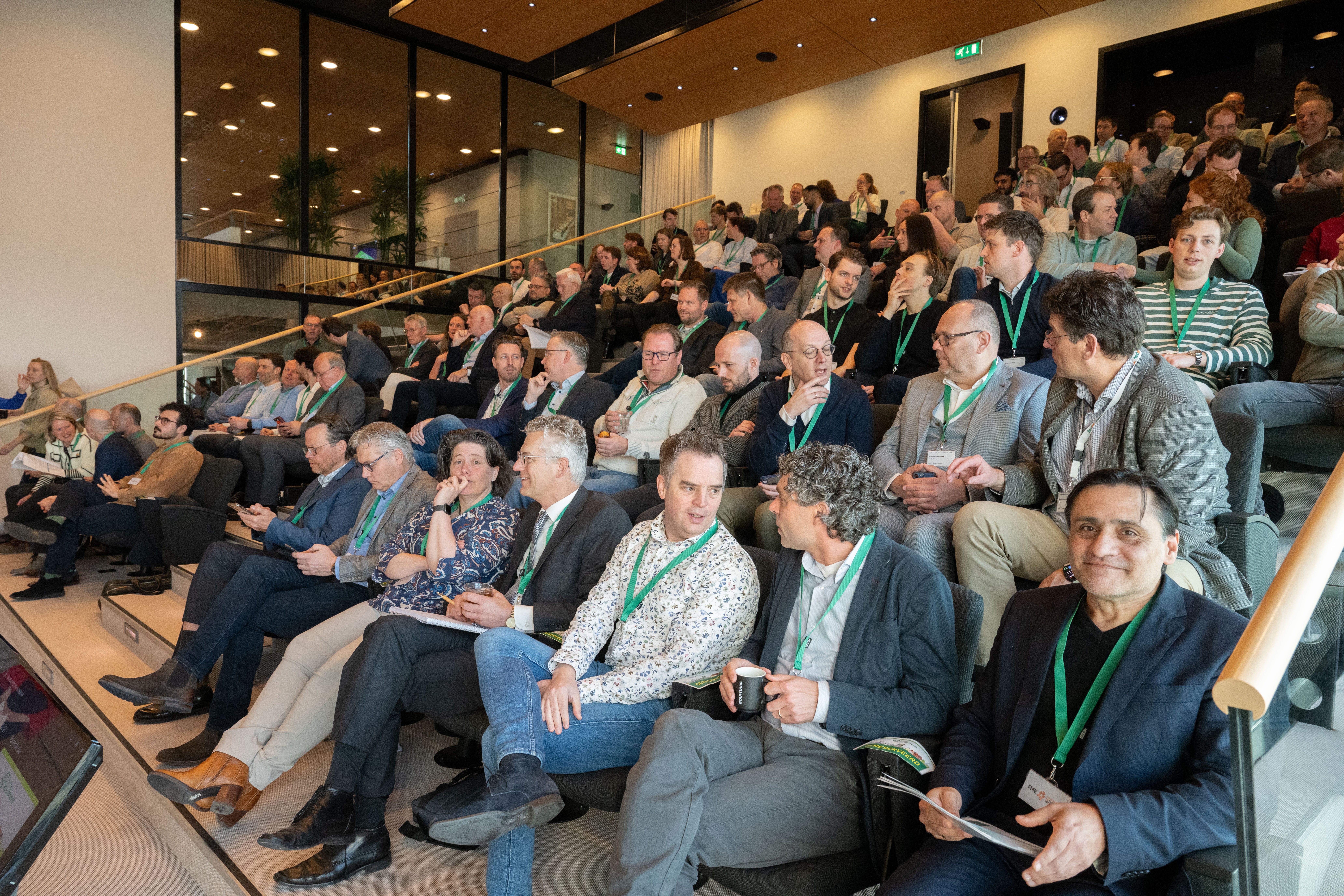
European harmonization
Back to the start of the meeting. After the kick-off by Yvette Watson, Coen van de Sande (director of NVKL) welcomes those present. He immediately seizes the moment to raise a topic that will come up more often today: the European harmonization of standards and regulations.
For manufacturers who sell their products in multiple countries, it is an obstacle that different countries have different requirements for data. Having a life cycle analysis (LCA) done costs time and money, and the Dutch environmental declaration that results from it cannot be used in other countries (and vice versa).
In Coen's words: “We would like to meet the objectives of the climate agreement and the circularity guidelines, but that is difficult if we have to jump through different hoops in each EU member state. European harmonization of standards and regulations is important. It will save time and money and make the data source larger and therefore more valuable.”
There is agreement from the audience. Later, John Drissen (NMD) and Dirk Breedveld (Ministry of VRO) will explain how far this process has progressed. European harmonization is a complex process, but everyone is aware of its importance, hard work is being done and the timeline is becoming increasingly concrete.

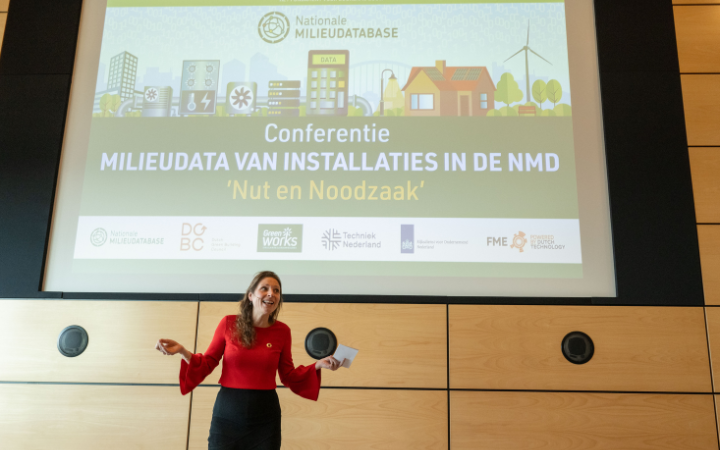
License to operate
Gerhard Hospers of Greenworks will now give the first presentation. He specifically mentions one of the disadvantages of the current lack of environmental data on installations. Because there is still little exact data (CAT 1), calculations are often made using generic data (CAT 3). However, this data is not accurate and because it has not been verified, these statements are given a 30% surcharge. This has a negative impact on the environmental impact of installations, because it increases it in the calculations. If manufacturers were to invest in category 1 data, this impact would decrease.
In addition, insight into the environmental impact of your products helps you with your business strategy. You gain insight into how you can become more sustainable and can demonstrably show customers how sustainable you already are. And the latter is very relevant, because more and more customers are asking for this - partly stimulated by the CSRD. “Make sure you make the final in time and invest in LCAs. That is no longer a license to go, it is a license to operate.”
Between the presentations there is always time for questions from the audience. One of these questions concerns the enormous amount of data that the installation sector already has via the ETIM standards and 2BA, among others. There may be a shortage of environmental data on installations in the NMD, but there is no shortage of data. Can't that data be exchanged? “Unlock all that data, if only for the CSRD.” The answer is that this is also being worked on industry-wide, under the umbrella of digiGO.
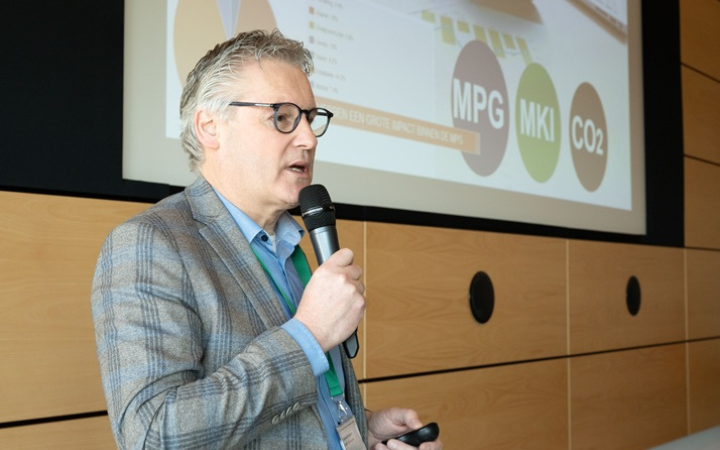

Long-term cooperation needed
The next speaker is Baris Can Düzgün, sustainability advisor at BAM. He explains BAM's sustainability strategy and can show, based on their company data, that technology is in the top 3 most impactful purchasing categories for BAM. Better insight into the environmental impact of the technology component is therefore very important to BAM. To make better choices and integrated design considerations on projects and to be able to report transparently as a listed company.
“We challenge our partners and clients to work together to build a sustainable future. Our question is therefore: what do you need from us to provide good environmental data?”
An answer to that question comes directly from the audience. “Among other things, what we need is business cases. When and how you, as the main contractor, make choices between product A and B, so that we have a business case for drawing up an LCA.”
Baris indicates that it is difficult to specify what the awarding of contracts is based on. Price is originally the driver, but the relationship has also become very important in this, as has how a party is working on making its products and company more sustainable.
Danny van Rij-Roks of Walraven - he will also speak later - adds from the audience that unfortunately, contract formation is still mainly about price. “We need trust and long-term cooperation.”
Baris agrees. ”You're right.” It indicates that the practice is still unruly. The industry feels the urgency and there is absolute motivation to become more sustainable and to start working with environmental data, as the questions and comments from the audience show. The challenges lie in how to do this. Later in the day, the case studies discussed during this conference will provide some answers.

Filling the gaps
The next speakers are John Drissen (NMD) and Jeannette Levels (LBP|SIGHT). They will talk about the various developments in Dutch and European legislation and how harmonization is being worked on. The White Spots Compensation Scheme will also be explained.
Producers of construction products and materials can apply for compensation for having an LCA made. The purpose of this compensation scheme is to increase the number of category 1 and 2 environmental declarations in the NMD. This supports producers in overcoming the cost barrier of having an LCA made.
Here too, connections appear to be made during the question round. The costs are raised once again during this question round. If you have 60,000 products in your assortment and are active in 100 countries, how can you ever make all those products with environmental data available in the NMD? Even if you see the usefulness and necessity of this environmental data, it costs far too much time and money. How can the data that is already available in abundance be shared and made available?
John can answer this by saying that the NMD is working on a pilot that zooms in on calculating with category 3 data. “We would like to include your input in this,” said John Drissen.
A comment about the attention given to W installations versus E installations also received support from the audience. More nuance should be applied to this, with more specific attention to E-installations. It shows that it is good that the conversation about environmental data from installations is being held and that this conversation should be given a structural follow-up after the conference. For such a complex subject as environmental data from installations, you have to sit down together and keep doing so.
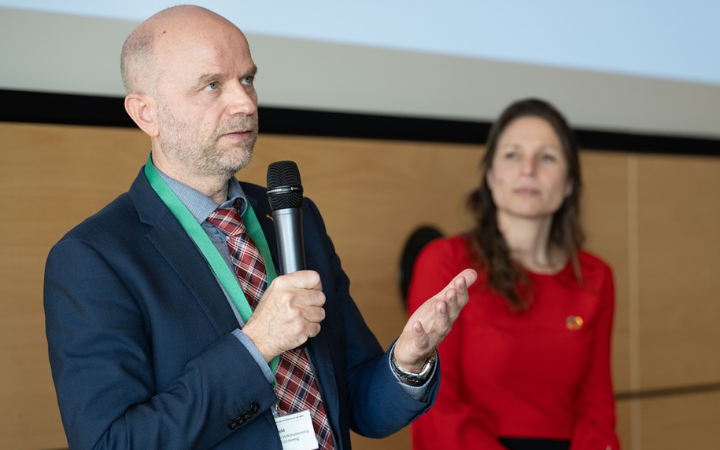

Developments in Europe
The floor now goes to Dirk Breedveld of the Ministry of VRO. He will go into more detail about European regulations. This also brings up the question that was asked at the very beginning of the conference: what about European harmonization?
Dirk can tell us that European harmonization will take time and, due to its complexity, is not progressing as quickly as we would like, but that this should not be a deterrent to getting started with environmental data. “Collecting environmental data now is not a waste of time. Whatever happens in Europe, everything you have will remain very useful information.”
A question about Product Category Rules (PCR) is then asked from the audience. That lack of clarity about the categorization of products often forms an obstacle to turning collected environmental data into a category 1 declaration.
This leads to a discussion about who is responsible for creating these PCRs. The conclusion is that it is mainly the sector itself. Independent parties such as the NMD can provide support by creating more clarity for manufacturers about the requirements for an LCA if there is not yet a PCR. So once again we see that cooperation, reaching out to each other. This is clearly a recurring theme today.
Circular Roadmap Climate Installations
The final presentation of the plenary session is by Atze Boerstra of TU Delft. He takes the audience into the future of installations and circularity. In the past, the design of installations was about energy use, costs and comfort. Now it is about energy use, costs, comfort and materialization.
With the growing shortage of raw materials, how can we stimulate reuse and circularity? How can we extend the lifespan of installations from the current 10-15 years to 25-30 years? Atze will present the Circular Roadmap for Climate Installations (CKI) on March 20.
Panel discussion on practical experiences
The plenary part of the conference closes with a panel discussion between Madelon Voorhoeve of ORCON, Danny van Rij-Roks of Walraven and Marijn Beekman of the Dutch Heat Pump Association. They talk about their own experiences with collecting environmental data. Why they do it: out of intrinsic motivation and to gain insight into opportunities for further sustainability and product development. And how they do it: by talking to your own suppliers, continuously involving the internal organization in the why and just getting started.
Use the power of collaboration
It turned out to be a valuable morning, as Jan Willem Groot, director of the NMD Foundation, also looks back. With a high turnout, many good questions and comments and concrete new connections between people.

Part session 1: Lessons from practice
The in-depth study during the part sessions adds even more value to this. For example, in the part session Lessons from practice, organizations that have already recorded an environmental statement for category 1 and 2 data in the NMD talk about their experiences. What does such a process look like? What have they learned in practice?
In the words of Danny van Rij-Roks of Walraven: “What has particularly stuck with us is the importance of common sense. Yes, there are many rules and yes, it is sometimes complex. In the beginning, we were not even given insight into the energy costs of our factory in the Czech Republic. But what it comes down to is that we want to be good to Mother Earth. Share that story, engage in dialog with each other, build relationships, just get started and use the power of cooperation to move forward.”
Sub-session 2: Calculating with category 3 data
Ruben Zonnevijlle (DGBC), Jeannette Levels (NMD), David Anink (W/E Adviseurs) and Nicoline Opbroek (NMD)
This session gave the participants insight into what the NMD is doing with the category 3 environmental statements: in a general sense and specifically for installations. What research has already been done on prioritizing installations for environmental declarations in order to calculate as accurately and completely as possible? After the presentation, there was time for questions, particularly from users of environmental declarations.
LBP, W/E Adviseurs and Lifecyclevision have drawn up advice on building installations, including Excel documents with inventories.
Sub-session 3: Roadmap for Circular Climate Installations
Thomas Wellink (Netherlands Enterprise Agency), Olaf Oosting and Atze Boerstra (Delft University of Technology)
During this session, the future vision, current practice and the steps needed to realize the desired development were discussed at length. The immediate reason for the meeting was the Roadmap for Circular Climate Installations, which is scheduled for publication on March 20. It was emphasized that clients can and should take an active role in commissioning in order to accelerate progress and increase impact. In addition, it emerged that international harmonization is essential. In order to align with European developments, it is important that the Dutch input is well organized. Cooperation within the sector was also discussed, and it became clear that increasing knowledge and awareness can only be effective if parties work together better and share information. Finally, the need for unambiguous definitions was mentioned. Clear and uniform terms are necessary to prevent misunderstandings and promote efficiency.
Meore information

Orcon HRC and OptiAir balance ventilation
Since January 2024, two balanced ventilation systems with heat and cold recovery from the brand Orcon have been listed in the NMD with category 1 data. We discussed it with Madelon Voorhoeve, former director of Orcon, now sustainability ambassador for the company.

Environmental declarations of heat pumps in the NMD
In this interview, Marijn Beekman of the Dutch Heat Pump Association explains how heat pump manufacturers joined forces and drew up joint environmental statements for 34 different types of heat pumps.
Read all interviews:
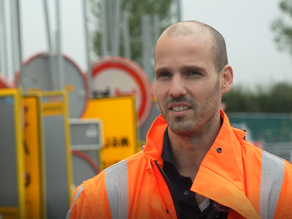
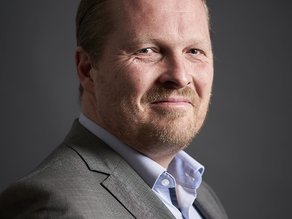
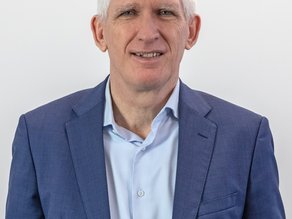
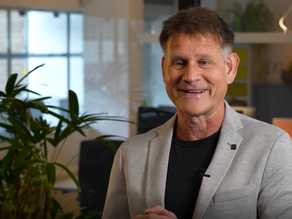
Lees meer
